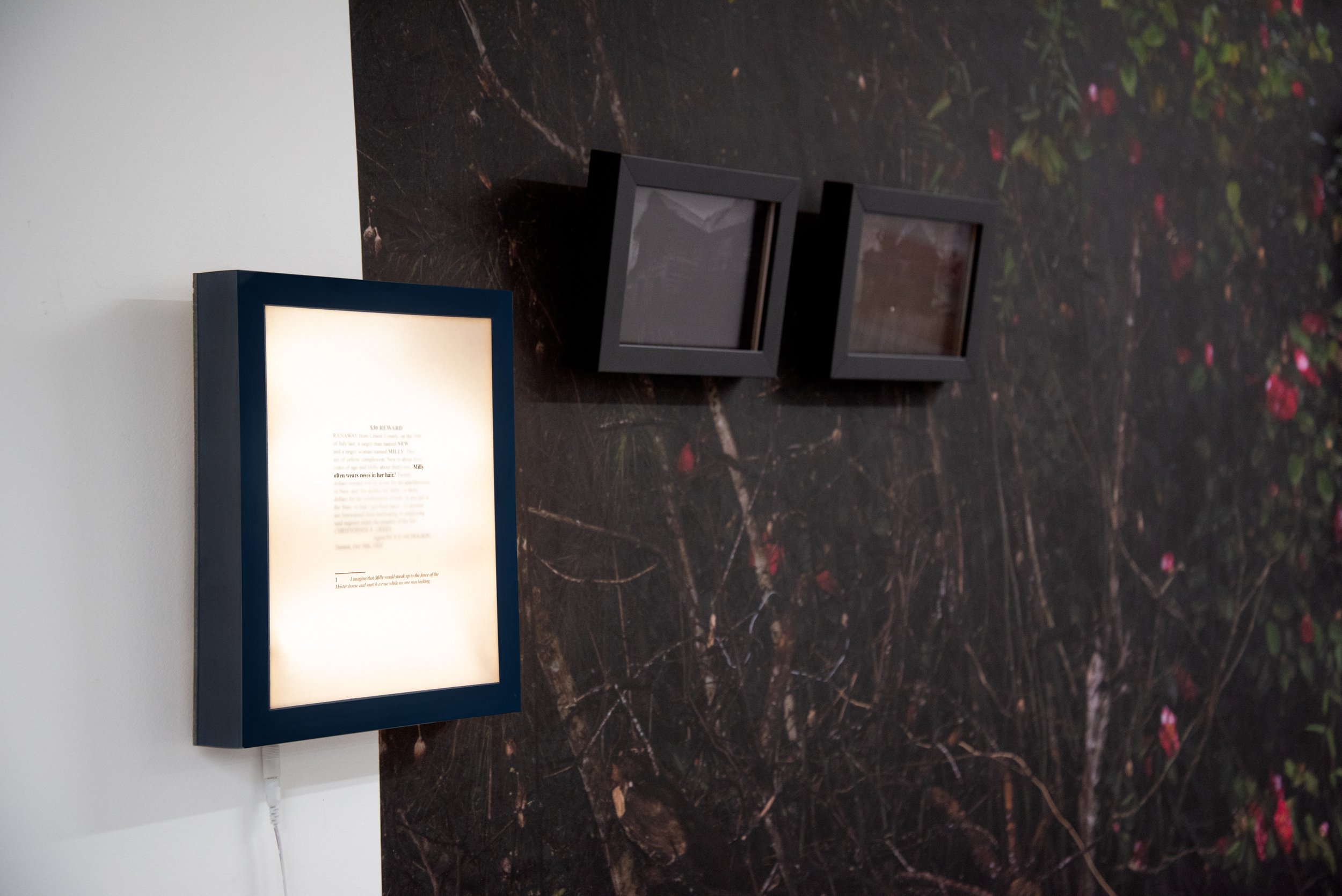Katie Hargrave and Meredith Laura Lynn, Bad Outdoorsmen (Episode 2) (Ruffner Mountain), laser cut polysilk, dual-channel video installation, 2024
GREENVILLE
Maybe Kudzu Covering My Body: Camouflage in the South
May 9 – Jun 14, 2025
Opening Reception: May 9, 2025, 6 - 9 pm
Tiger Strikes Asteroid Greenville is excited to share its next exhibition, Maybe Kudzu Covering My Body: Camouflage in the South, a group exhibition with work by borealis, Jacob Riddle, Katie Hargrave & Meredith Laura Lynn, Max Trumpower, Mo Costello, Nathaniel Hendrickson, Raymond Thompson, and Utē Petit. The exhibition will run from May 9th - June 14th, 2025, with an opening reception on Friday, May 9th, from 6-9p.
In the West, camouflage was fi rst driven by the increasing range and accuracy of infantry fi rearms in the 19th century–which came with an olive green uniform worn by the British during the Napoleonic Wars (1803-1815). Camouflage, as we recognize it now, was theorized and introduced into the military lexicon upon the research of artists such as Abbott Thayer, Norman Wilkinson, and Hugh Cott at the beginning of World War I. Their designs referred to countershading, reference to animal coloration, background matching, and disruption. Though the claim for the invention of camouflage is taken by the British, Native peoples from the Americas were documented by Thayer using comparative and background matching camouflage for hunting and battle dress long before the 20th century evolution in the UK and United States. Indigenous hunters not only built camouflage to conceal themselves from their prey, but built it on the environment. The distinctions between the practice of concealing oneself as that of and in the environment, and the contrasting practice of observing the environment and mimicking are distinguishing characteristics that one cannot help but contemplate when considering this type of creative armament.
In Maybe Kudzu Covering My Body, these nine artists explore camouflage as subject, action, visual reference, or by actively camoufl aging. We fi nd investigations of counter-surveillance, and in other examples, we fi nd the opportunity that Abbot Thayer found himself preoccupied with–the evidence of camoufl aging within nature as a stimulus; evidenced in community led infrastructure that provides safety and support amongst and within marginalization, or through a fusing and musing between that which is the body and the stuff that isn’t.








































photos by Jessica Swank

